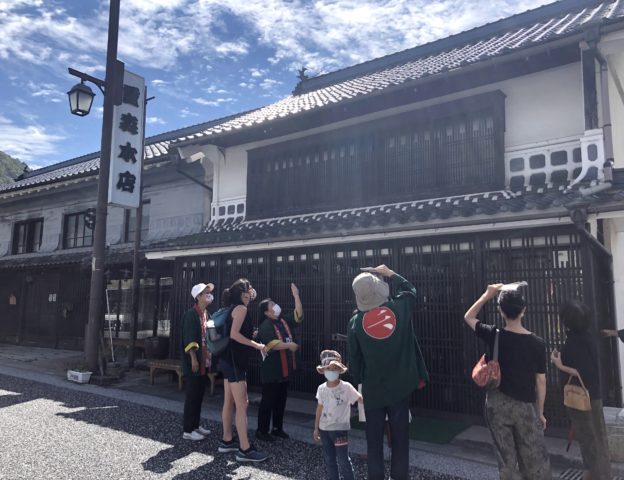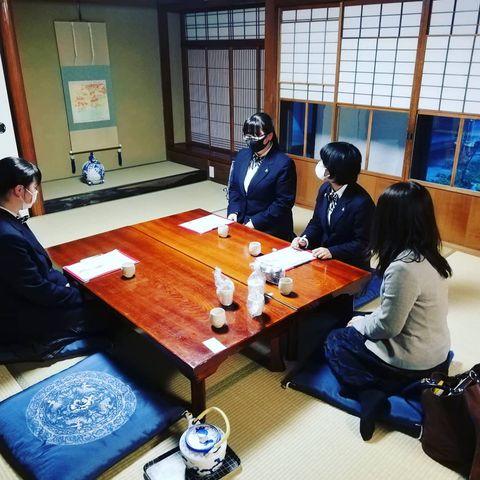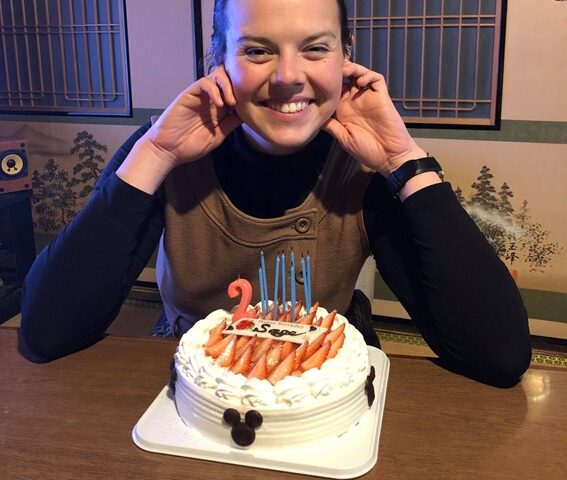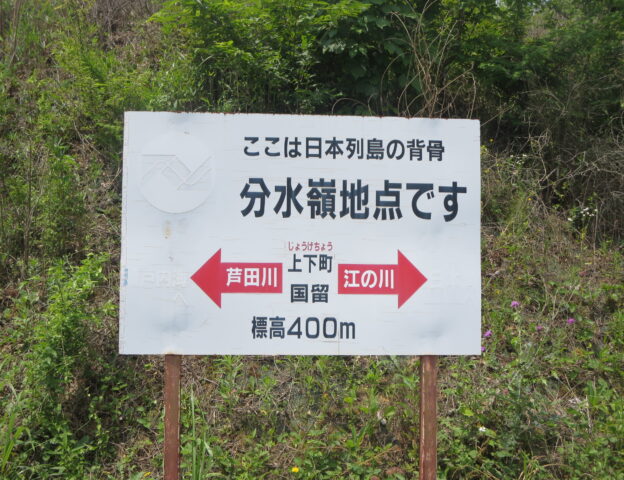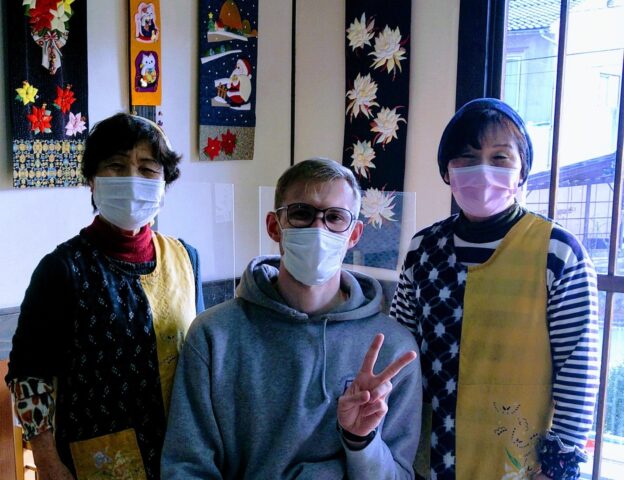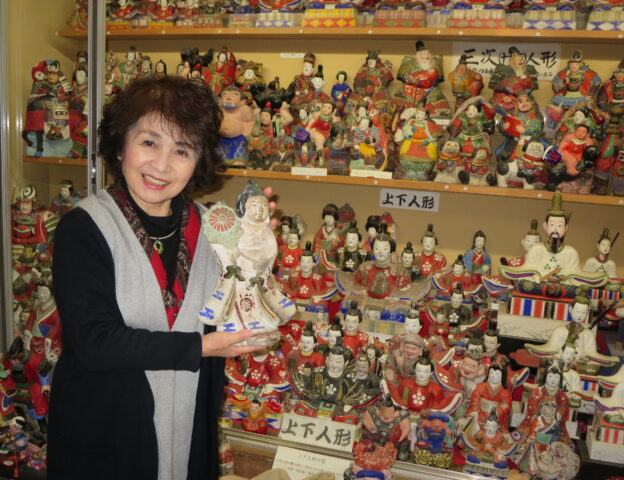Maehara Sweets Shop
Hello there everyone! This is Mary, back with another entry in my JOGE blog series. Joge is a small town in northern Hiroshima where the charm of traditional Japanese lifestyle, architecture, and hospitality abounds. It is my hope that by writing English content about Joge, many people will come to know and love this town like I do.
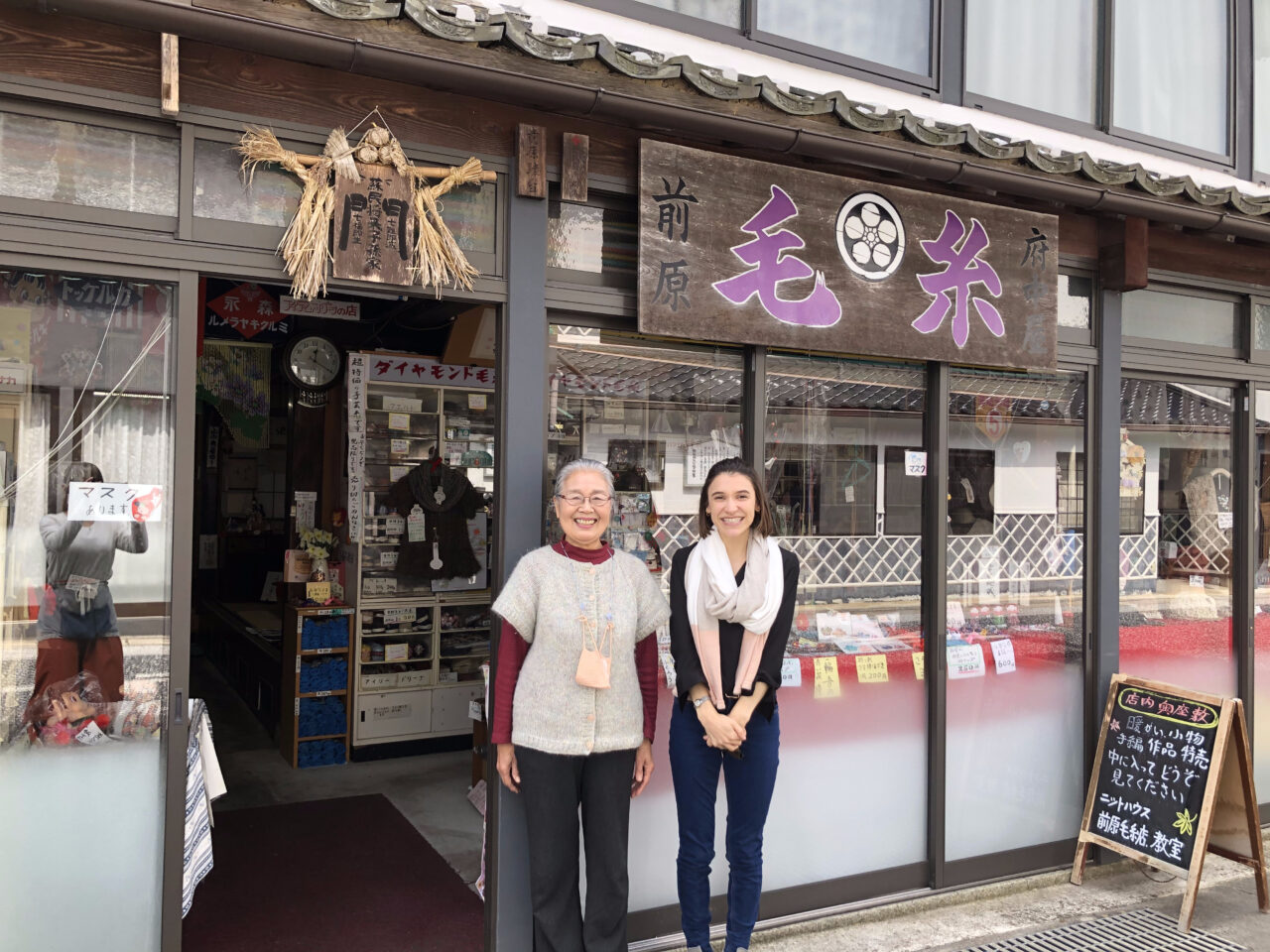
This time, I’d like to introduce you to one of Joge’s hidden gems: the Maehara Yarn Shop, formerly known as the Maehara Sweets Shop. The Maehara’s have been running this shop, in its many iterations, for over eight generations – yes, I said eight! – from their well-preserved Edo-era home. Mrs. Maehara was gracious enough to show me around so I could introduce the story of her family and shop to all of you.
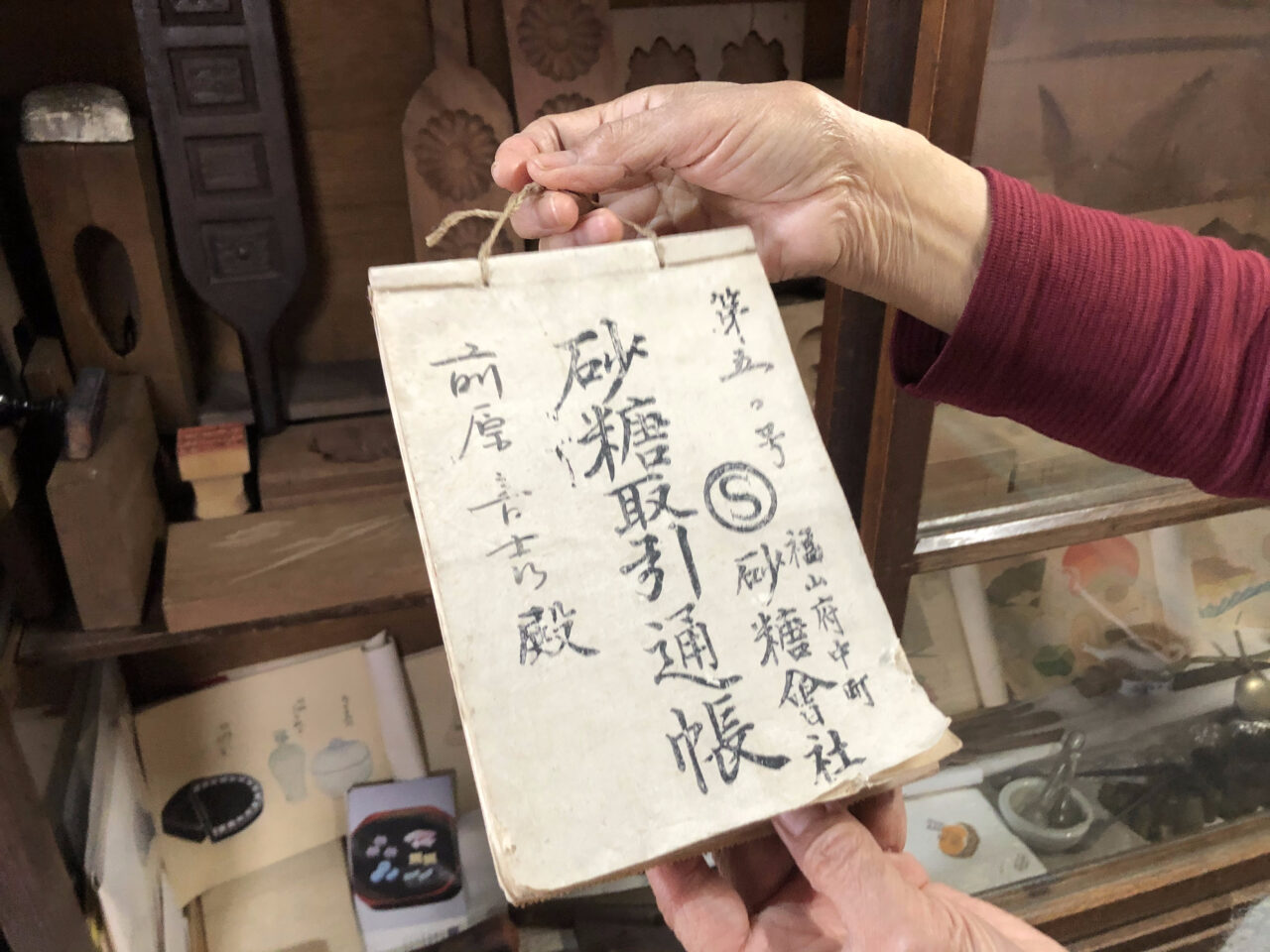 [Mrs. Maehara holds the transaction book that her ancestors used to track their sugar purchases.]
[Mrs. Maehara holds the transaction book that her ancestors used to track their sugar purchases.]
As we entered her storefront, Mrs. Maehara explained to me that her ancestors studied many kinds of pastry and sweets in Kyoto, and used their knowledge to propel their small, family-owned business forward. They used to walk all the way to Fukuyama (a nearly 100 km or 60 mile journey) and haul heavy bags of sugar back with them! Can you imagine?
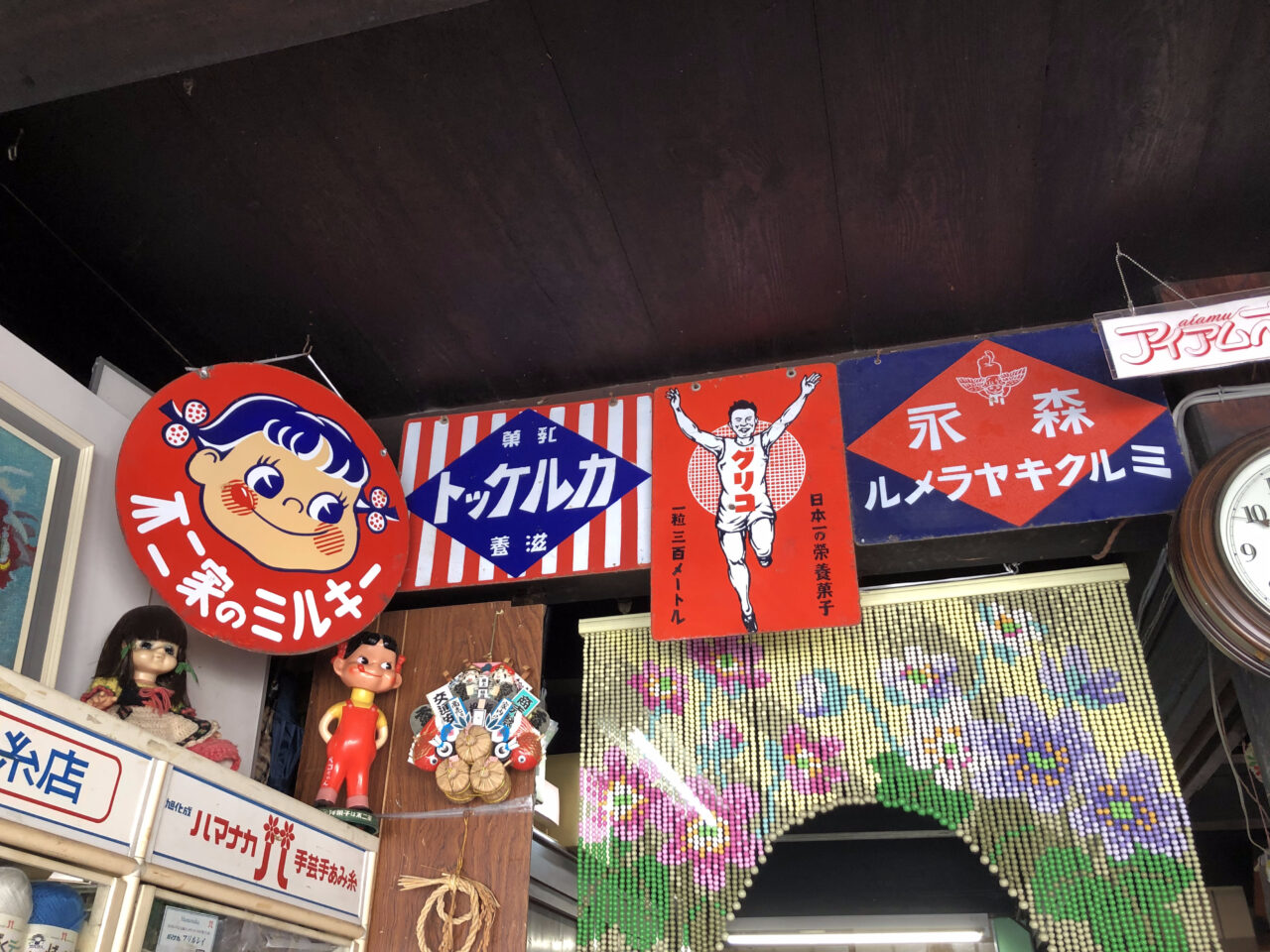 [Signboards advertising Japanese confection brands line the modern-day Maehara Yarn Shop]
[Signboards advertising Japanese confection brands line the modern-day Maehara Yarn Shop]
An avid sweets-lover myself, I asked Mrs. Maehara what it was like working at her family’s sweets shop. She described how local bankers and sake brewers would arrive in droves at 10:00am and 3:00pm to buy freshly baked manju sweet buns on their work breaks.
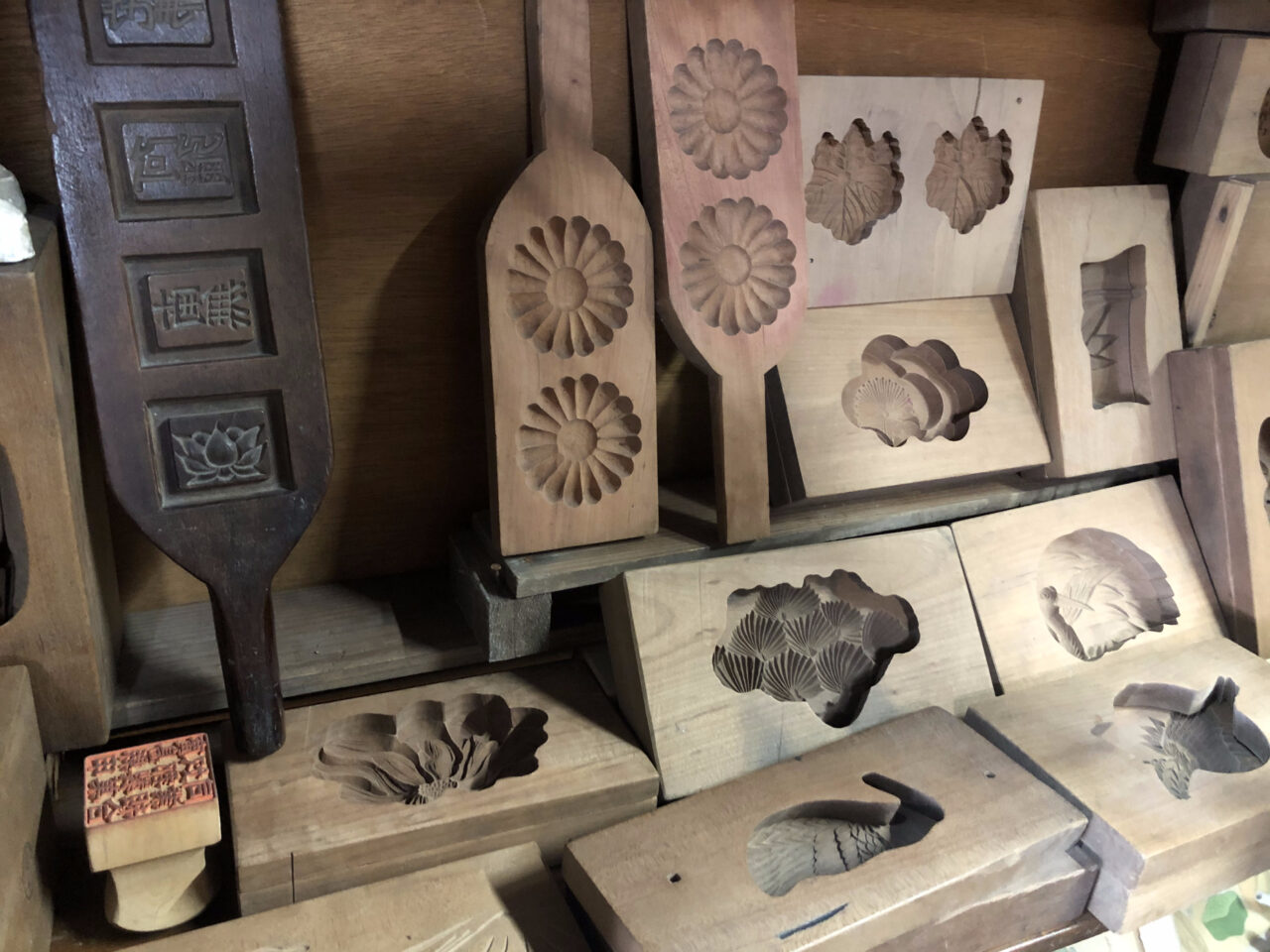 [Various tools the Maehara’s used to make rakugan ceremonial sweets]
[Various tools the Maehara’s used to make rakugan ceremonial sweets]
 [A very old and delicate art piece made by laying white sugar over top yokan red bean jelly]
[A very old and delicate art piece made by laying white sugar over top yokan red bean jelly]
Aside from manju, her family specialized in senbei rice crackers, yokan red bean jelly, sugar sculpture, and rakugan, Japanese traditional ceremonial sweets. Joge is located in the mountains, where it is difficult to get fresh seafood. That is why the locals would make rakugan sweets in the shape of fish like sea bream for weddings and other celebratory occasions.
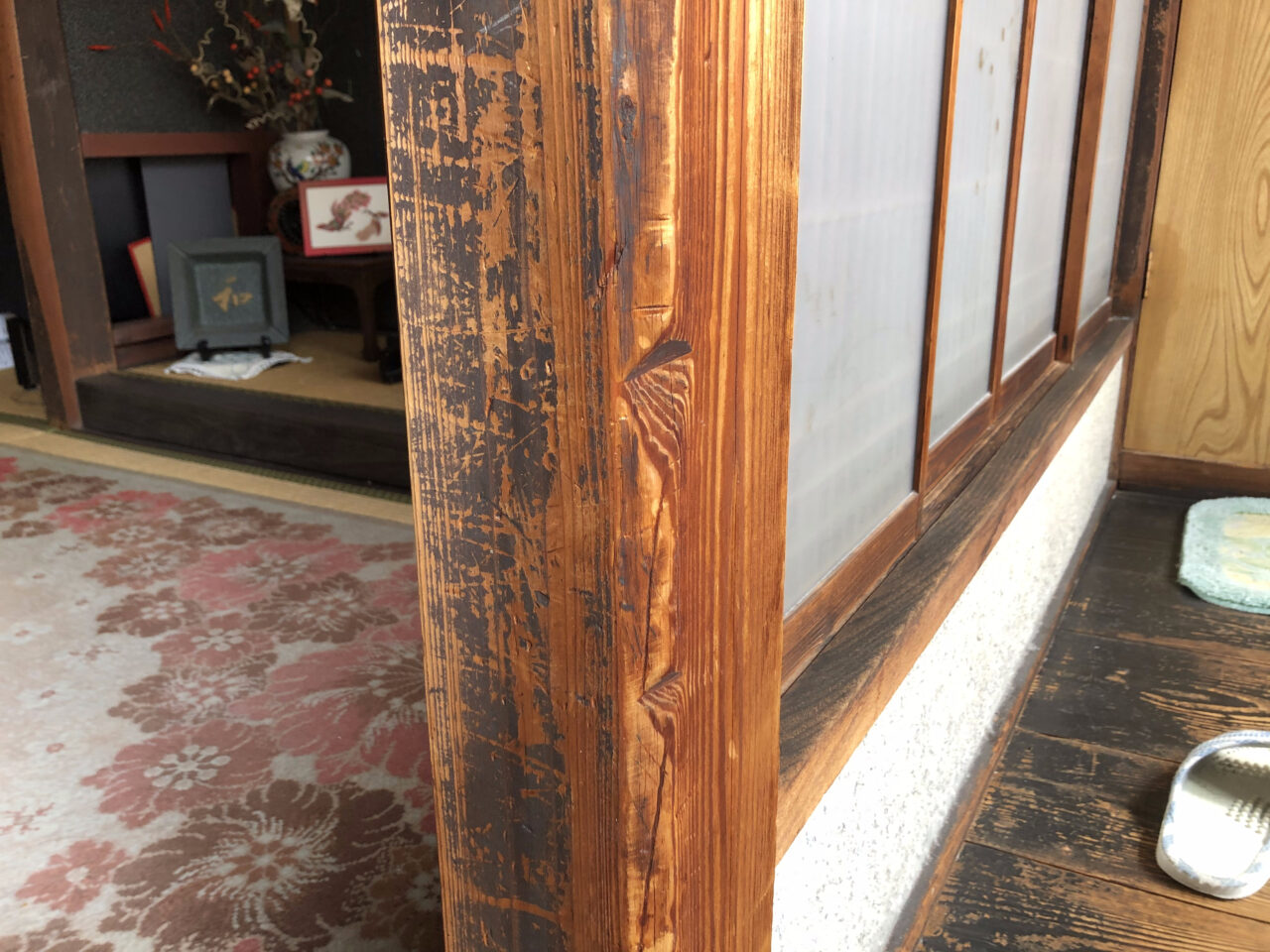
Moving from the storefront into the Maehara’s home, Mrs. Maehara took me to a large tatami room to show me a piece of Japanese history. During the Meiji Restoration, samurai used to stop in Joge on their way to the battlefront in nearby Shimane Prefecture. Back then, there weren’t many proper inns, so the samurai stayed wherever they could, including in the Maehara Sweets Shop! Mrs. Maehara beckoned to a wooden pillar with two large gouges. She explained to me that a samurai had gotten drunk and accidentally scarred the pillars with his katana sword.
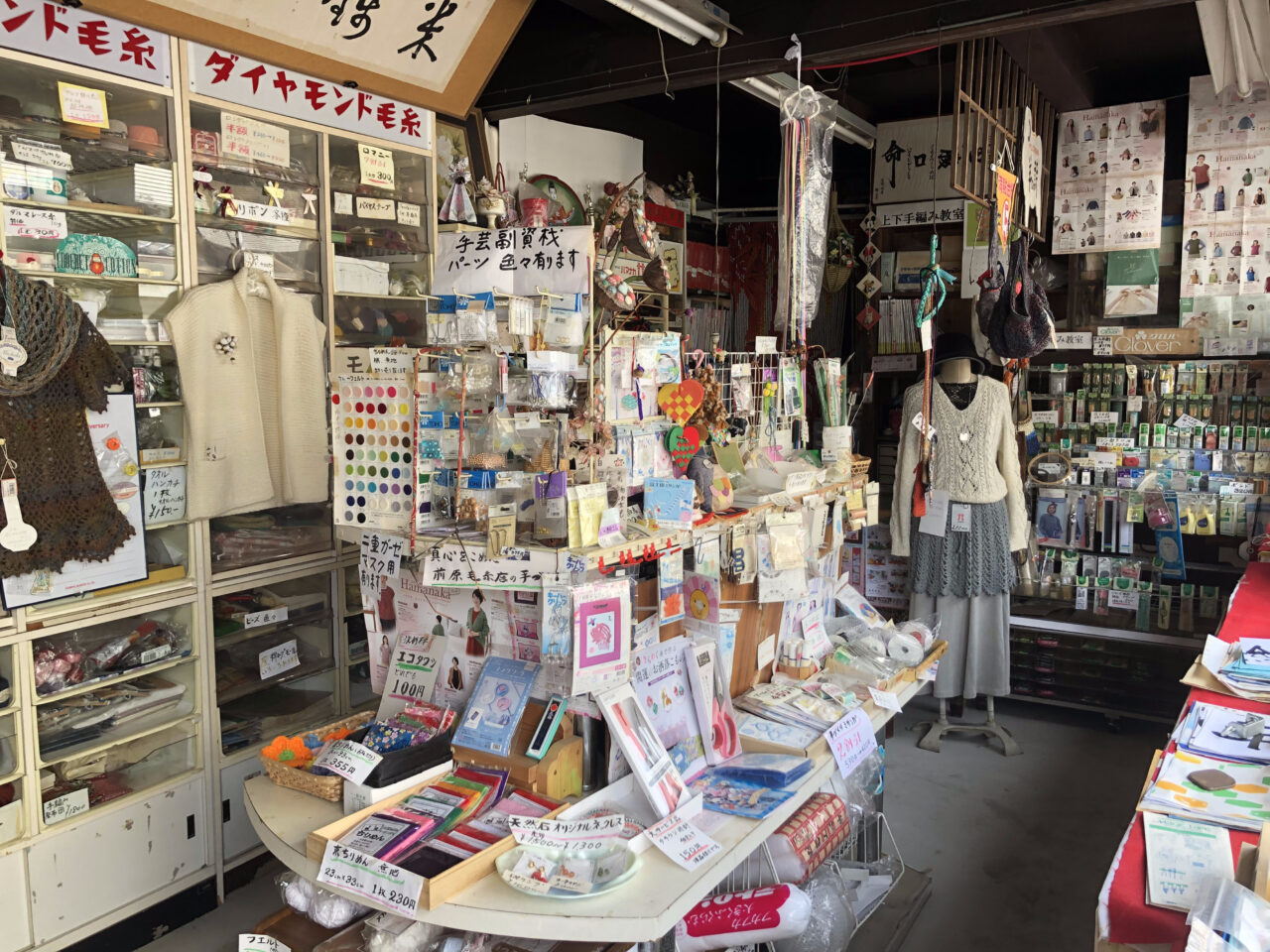
The Maehara Sweets Shop remained a Joge staple until 1970, when it finally closed due to a lack of successors to run the shop. After that, it went through various stages, selling tea and flowers, offering sweet-making classes, and finally, settling as a yarn shop, a purveyor of threads, crafts, and other interesting artifacts.
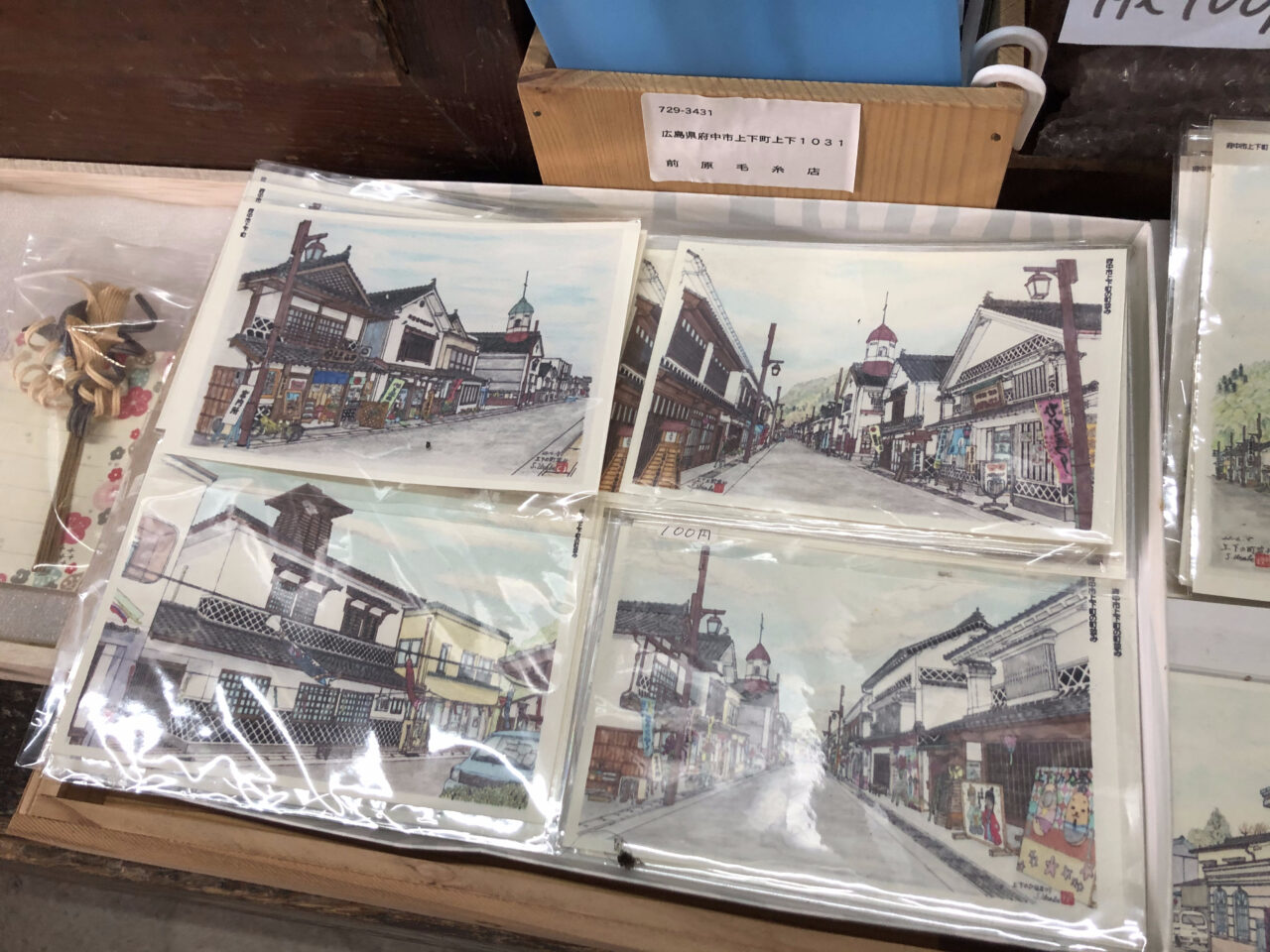
Mrs. Maehara is very proud of her family’s legacy and of Joge’s history. She often meets with locals about how to attract tourism so that many people can see Joge’s hidden treasures. Mrs. Maehara is especially interested in sharing Joge with foreigners who visit. She bought an English CD to practice, and even took English classes from me when I lived in Joge! She has noticed that the most popular item among foreigners in her shop are the postcards of Joge’s townscape.
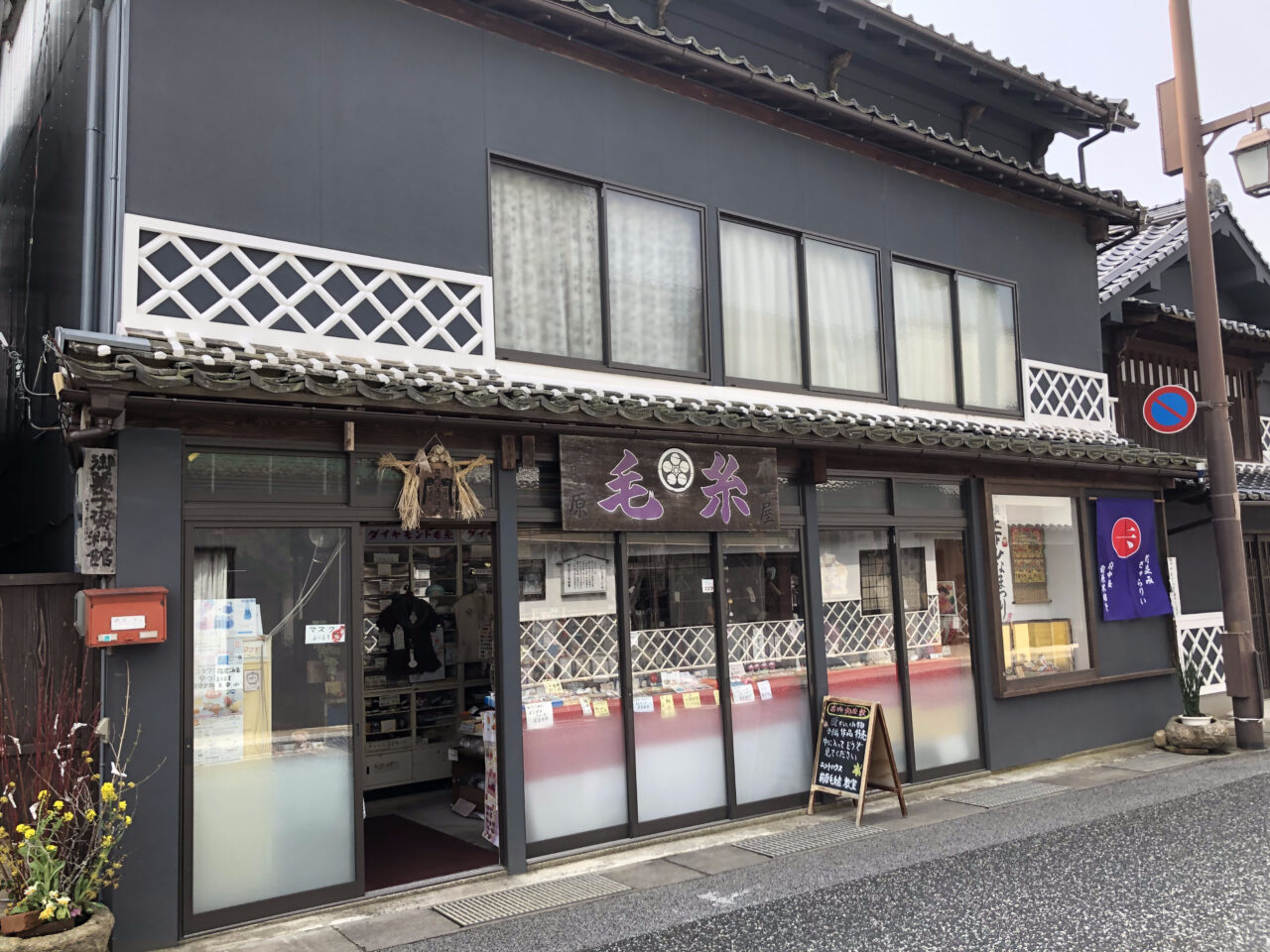
Mrs. Maehara hopes that when foreigners visit Joge, they can get a feel for traditional Japanese ways that the locals are working hard to preserve. She told me, “I think everyone wants to hear about the old ways, the way things used to be. We are trying to preserve our history so that we can pass on the wisdom of our ancestors to those who will listen!”
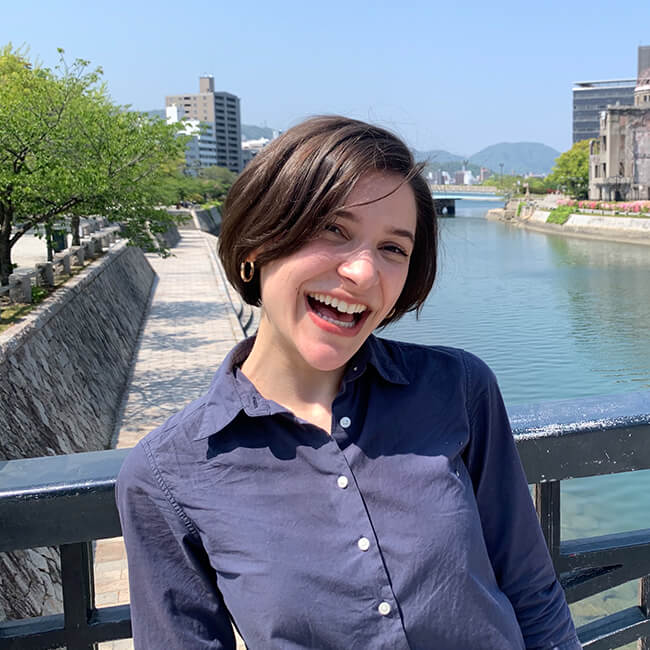
Mary Popeo has lived in Hiroshima Prefecture for five years, three of which she spent in Joge. She is passionate about sharing the magic of the Japanese countryside with people from around the world. Mary currently works at a peace education nonprofit in Hiroshima City, and collaborates with Fuchu City and the Joge Town to plan programs for inbound English-speaking tourists.

